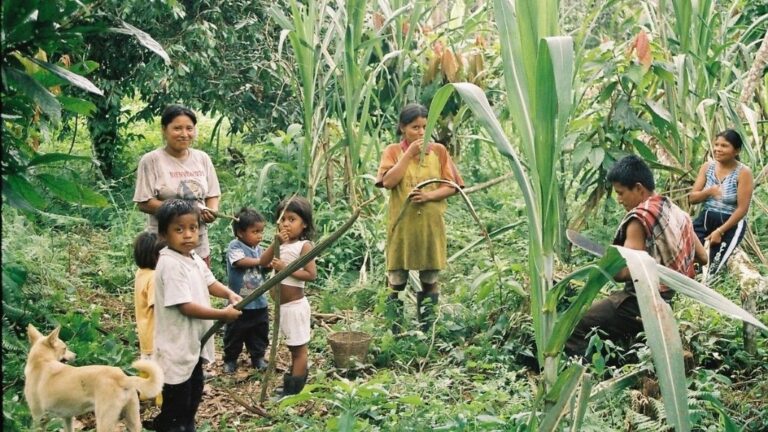
The northernwestern Esmeraldas Province, a highly marginalised and invisibilized region, is home to the Chachi, Awá, and Épera Indigenous peoples, traditional Afro-descendant communities, and Mestizo people. Photo: Julianne Hazlewood
Av: Eleonora Moen och Leni Lindemann
Palm oil companies are detrimentally impacting rural livelihoods and biodiversity in northwestern Ecuador by extracting resources and polluting ancestral lands and rivers. Indigenous and Afro-descendant communities are particularly vulnerable to exploitation and health hazards posed by these companies. As an act of resistance, the communities, supported by the organisation Roots & Routes IC, have filed the world’s first constitutionally-based Rights of Nature Lawsuit to demand justice.
3 maj, 2021, English, Interview, Magazine
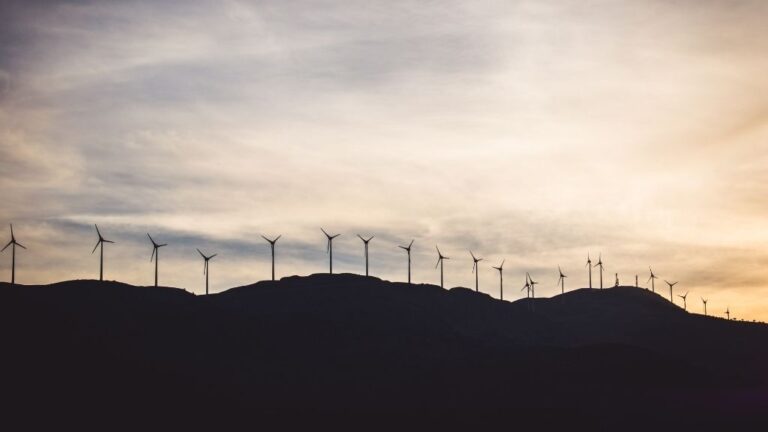
Energy infrastructure in rural areas is a threat to indigenous livelihoods Photo: Jason Blackeye/Unsplash
Av: Alice Castensson och Julia Mühlhauser
The effects of climate change endanger humans all over the world. Nonetheless, indigenous people - who contributed the least - are doubled affected. As countries are increasingly implementing adaptation strategies, renewable energy is often raised as the solution - with large projects being constructed in rural areas. This however overlooks the interests of indigenous peoples living in these areas.
29 april, 2021, English, Interview, Magazine

An elderly woman in domestic work, Mexico. Photo: Lorna Brooks, Flickr.
Av: Carlos Ranero och Charlotte German
The film ROMA portrays the life of an indigenous woman in Mexico and has sparked a debate about the working conditions for indigenous domestic workers in the country. Discrimination, violence and no working security are some of the risks that make up the daily work life for many of the marginalized women.
9 april, 2019, English, Magazine
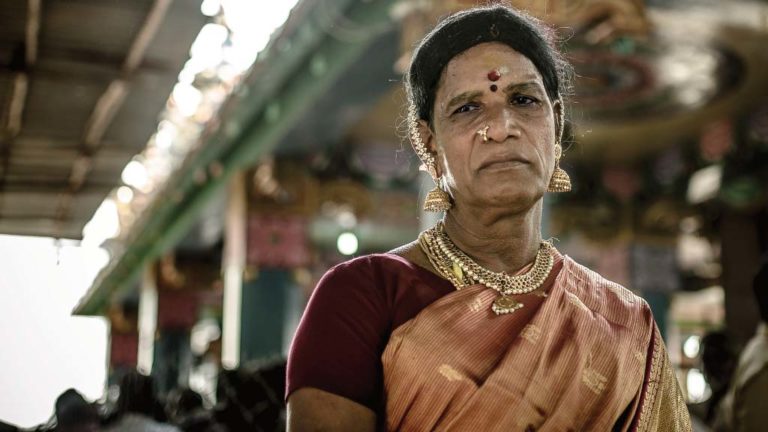
A hijra (term for individuals in South Asia who feel neither male or female) at the annual Transgender Festival in Koovagam, India, in 2017. Photo: Lingeswaran Marimuthukumar, Flickr.
Av: Hanna Geschewski och Lauren Tropeano
What happens if you don’t behave like your gender ‘should’? Examples from Native American, Indian and Iranian cultures highlight that gender is diverse, but that the acknowledgement of gender variance doesn’t necessarily make us inclusive.
10 december, 2018, Article, English, Magazine

Indigenous and native groups have become minorities in areas they’ve historically controlled. Photo: Arne Hoel/World Bank, Flickr.
Av: Fredrik Björksten
A couple of centuries ago, there was really no need to talk about either indigenous or native populations. People were then, by definition, all natives to where they were born and lived. However, as colonialism started to spread across the globe, people with roots dating back centuries was being pushed away for the sake of […]
Läs mer »
26 oktober, 2018, Editorial, English, Magazine

Another missing and murdered indigenous women's march in Minnesota, 2017
Source: Flickr
Av: Louise Gripenberg och Maria Ricksten
In the beginning of October 2018, another march for indigenous rights was held in Montreal, Canada. Hundreds gathered to remind politicians and police officers of the missing and murdered indigenous women. Canada’s long history of ethnic discrimination continues to echo today alongside the government’s failure to address this structural violence.
26 oktober, 2018, Article, English, Magazine
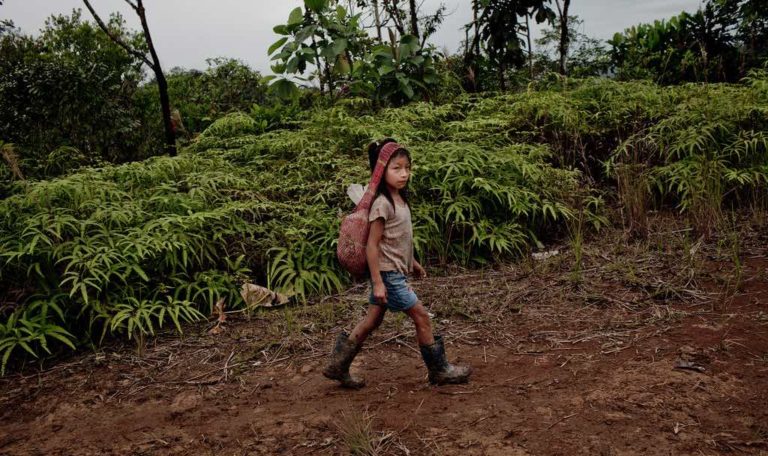
A Kichwa girl carrying her sack tumpline style near the Jondachi river in Ecuador.
Photo: Tomas Munita/CIFOR, Flickr.
Av: Johanna Caminati Engström och Lisa Elamson
In the last decade, progress has been made for the rights of the indigenous people of Ecuador. But despite a favourable legal context and numerous promises made by the government, their rights are still under threat by foreign economic interests.
26 oktober, 2018, Article, English, Magazine
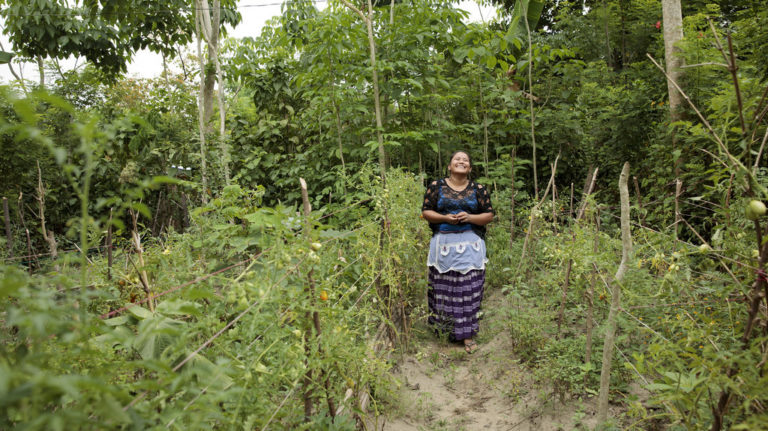
A woman from an agrarian indigenous community in Puente Viejo, Guatemala. Photo: Ryan Brown/UN Women, Flickr.
Av: Carolina Yang
In the field of agriculture where production is the major appeal, a lens from the indigenous perspectives provides opportunities to relieve the unprecedented environmental stress imposed by industrial agriculture. Rather than over-simplified food system, sustainability will be more reachable if native wisdom is applied in celebration of diversity.
26 oktober, 2018, Article, English, Magazine

Woman from the Mong Tribe in Chiang Mai, Northern Thailand, drawing designs on a piece of cloth.
Photo: Justin Vidamo, Flickr.
Av: Alexandra Håkansson och Linda Sebbas
For the last decades UNESCO has been criticised for not tending to indigenous rights. The World Heritage convention has, despite its aim, resulted in devastating consequences for indigenous peoples. Signs of change in their work can be detected, but will it be enough?
26 oktober, 2018, Article, English, Magazine

Indigenous women collecting grass for their cattle in Kathonibari, Kaziranga National Park.
Photo: Eleonora Fanari & Pranab Doley.
Av: Hanna Geschewski och Vittorio Capici
The loss of Indigenous peoples’ natural resource base is often associated with rainforest clearing, dam projects and the mining industry. But it is not always the infamous multinational corporations that drive native peoples from their lands. Two examples from India and Alaska illustrate how public conservation policies and inter-indigenous conflicts threaten communities and identities.
26 oktober, 2018, Article, English, Magazine










